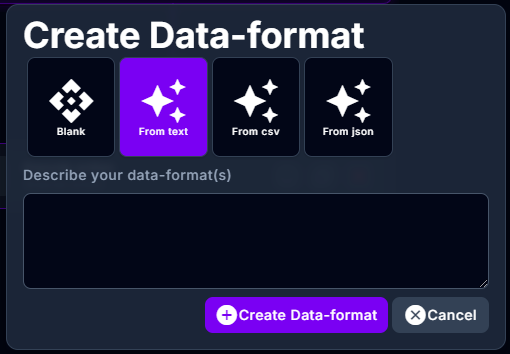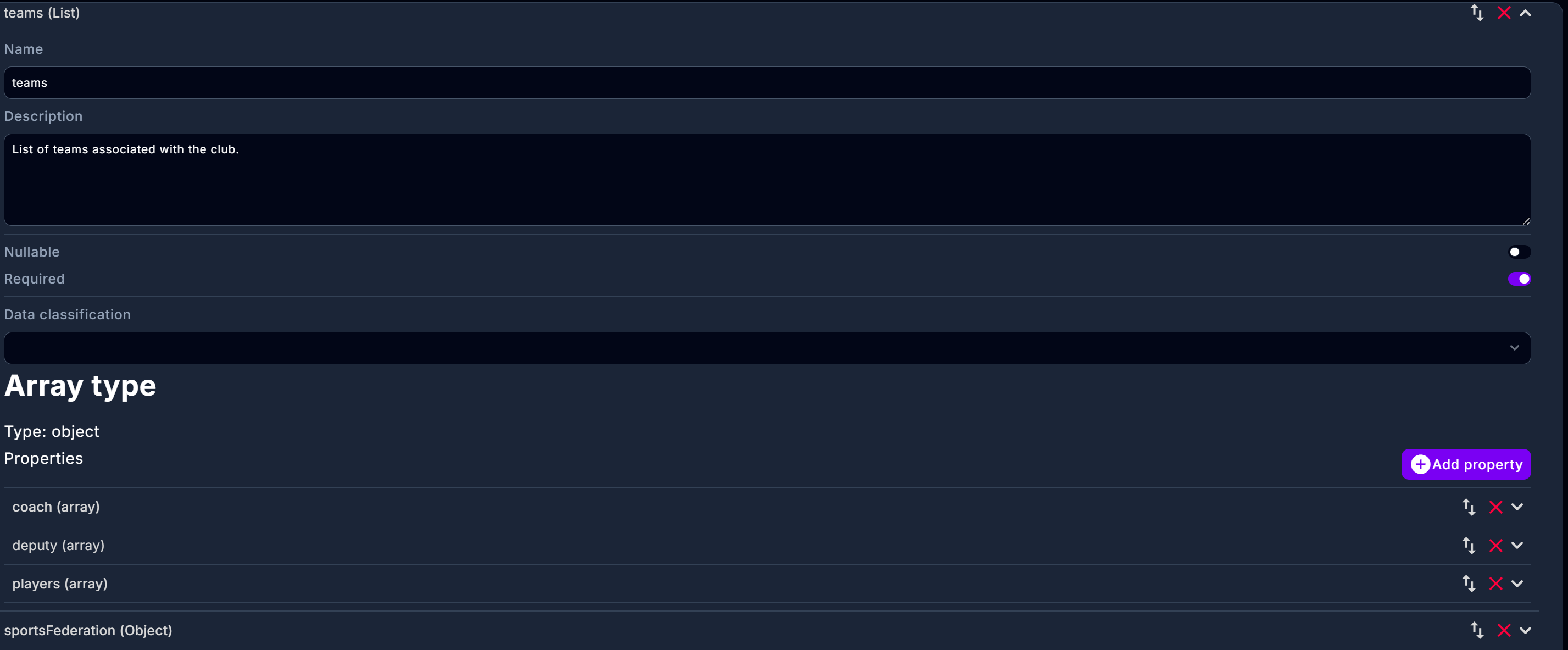Generating data format using gen-AI
Introduction
This guide provides a step-by-step approach to creating data formats from business descriptions, focusing on two distinct methodologies: maximum consolidation in a single format and fine-grained normalized data formats. Each approach has its own advantages and disadvantages, which will be explored to help you choose the best method for your needs.
Step-by-Step Guide
Step 1: Access the Data Format Creation Tool
- Navigate to the "Data Formats" section of your tool.

- Select "Create a New Data-Format" to begin the process.
Step 2: Convert Business Description to Data Format
- Choose the "From Text" option to convert your business description into a data format.
- Input a detailed description of your use case. For example, creating data formats for music bands with albums and songs.
Step 3: Decide on Data Modeling Approach
-
Consolidated Approach:
- This method involves creating a single, comprehensive data format that includes all related data in one structure.
- Example: A music band data format that includes albums and songs as nested objects.
- Advantages:
- Simplifies data retrieval with a single call.
- Provides a complete view of the data in one object.
- Disadvantages:
- Can lead to large, unwieldy files.
- Performance issues when querying specific elements like individual songs or albums.
-
Normalized Approach:
- This method involves breaking down data into smaller, related formats, each focusing on a specific entity.
- Example: Separate JSON formats for bands, albums, and songs, with references linking them.
- Advantages:
- Improved performance for specific queries.
- Easier to scale and maintain.
- Disadvantages:
- Requires multiple calls to retrieve related data.
- More complex data management.
Step 4: Create Data Formats
For Consolidated Approach:
- Click “Create Data-Format” to generate a single data format.
- Prompt: Create a data format for a sports club, the club has teams where each team has lists of players, coaches, deputy who each need to be able to identified by their information.

- Click “Save” to finalize the format. See the nested result for the Club's teams and members:

For Normalized Approach:
- Define the different types of data formats needed (e.g., club, team, player).
- Example:
- Create a club object. There are already formats for players and teams. The club is a sportclub which can be linked to a sportsfederation.

- Create a team object. There are already formats for players and clubs, natural persons. A team has lists for: coach, deputy, and players.

- Create a natural person object. It needs to be able to store address and have digital communication through email. There are already formats for players and clubs, teams, deputy, coach. A natural person has lists of labels on which role they have, examples of such labels are coach, deputy, player.

- Create a club object. There are already formats for players and teams. The club is a sportclub which can be linked to a sportsfederation.
- Click “Save” after creating each object.
Conclusion
By following this guide, you can effectively create data formats from business descriptions using either a consolidated or normalized approach. Each method has its own set of pros and cons, and the choice depends on your specific needs for data retrieval, performance, and scalability.